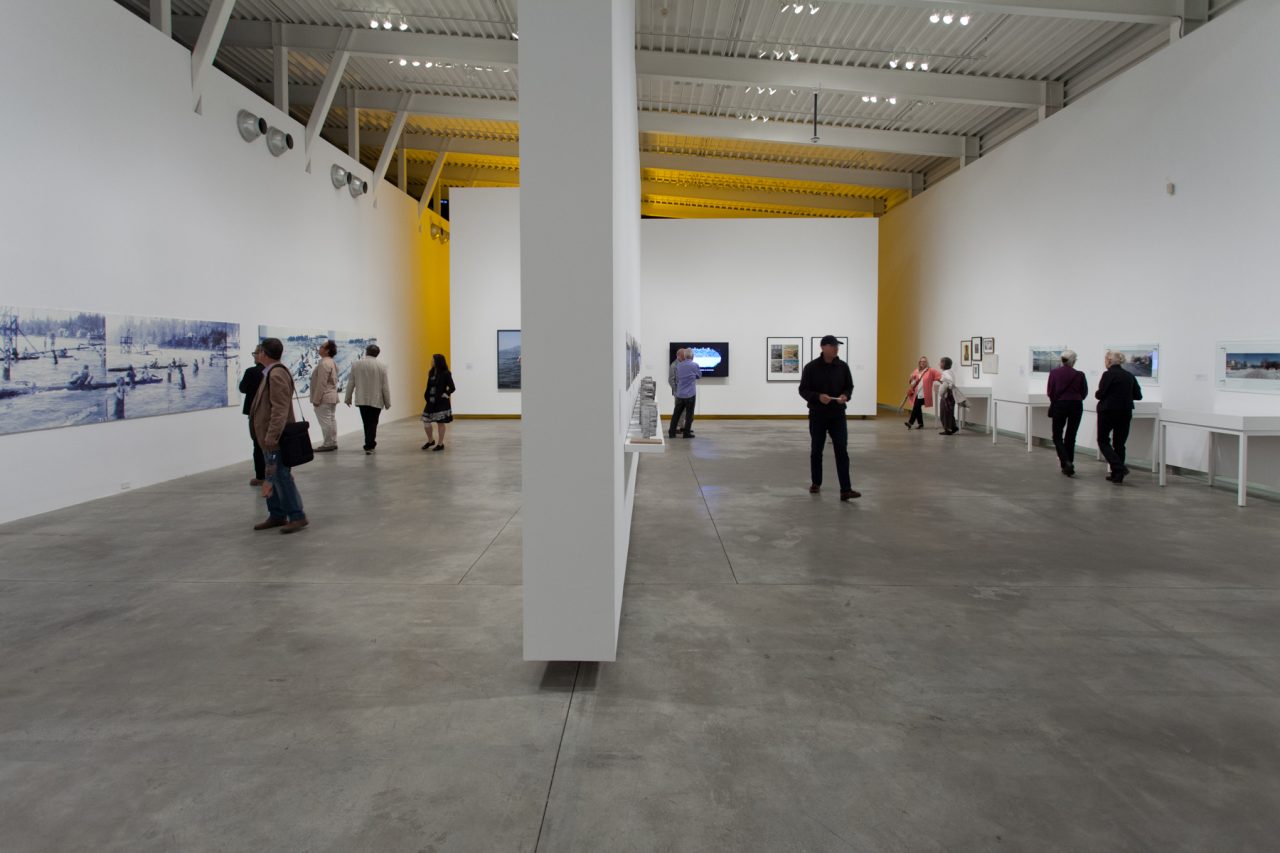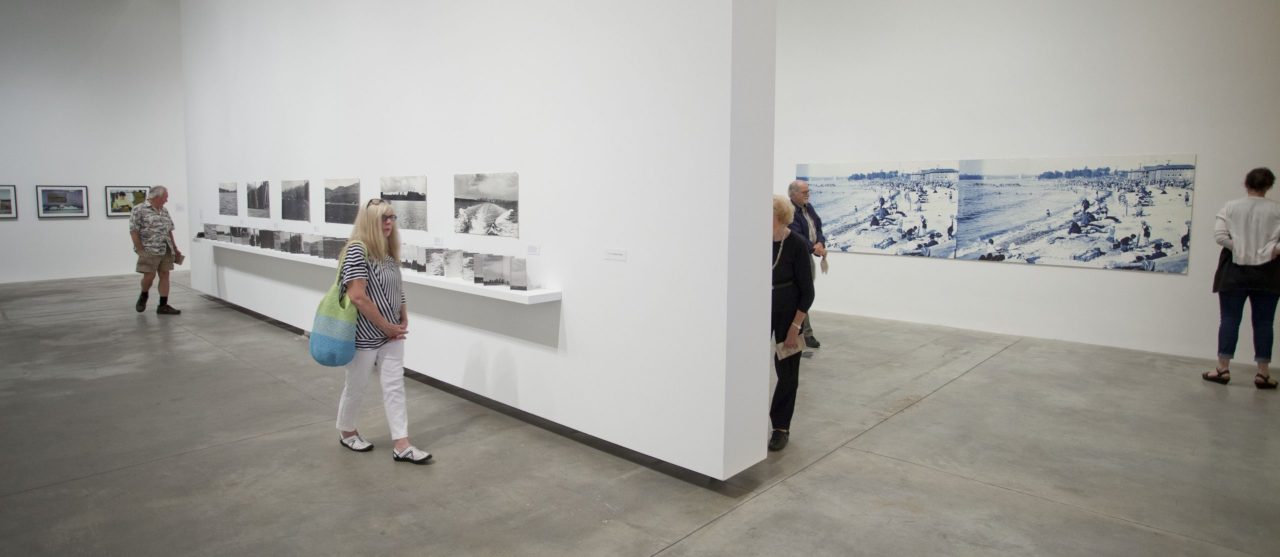20 June 2015, 1-2 pm
Curator Tour: Melancholy Bay with Scott Watson
Scott Watson guides a tour of Melancholy Bay: Images of English Bay, Burrard Inlet and Howe Sound from the Collection.
Melancholy Bay began as a response to the recent oil spill in English Bay. The University of British Columbia, located on unceded Musqueam territory and only kilometres west of the ancient city of c̓əsnaʔəm, looks out over English Bay, Howe Sound and the Georgia Straight, all bodies of water renamed by George Vancouver in the 1790s. The title Melancholy Bay is a reference to Vancouver’s dispirited response to what he saw as “a sublime, though gloomy spectacle.” The settler culture that followed Vancouver to establish jurisdiction and displace the indigenous villages and place names has been consistent in admixing descriptions of majestic landscape with ideas of frontier and resource extraction. As a result we tend to naturalize the large visual imprint made by the resource extraction industries as the picturesque.
Melancholy Bay presents a variety of artistic perspectives that illustrate how the port of Vancouver and its environs have been represented over several decades. The University’s Art Collection yielded works that can be seen as historic documents as well as works of art. These range from the bucolic examples of B.C. Binning and Irene Hoffar Reid, social/historical ruminations of Roy Arden, Jack Shadbolt and Anne Ramsden, to poetic evocations by Mark Lewis and Marian Penner Bancroft. Other artists included in the exhibition are Christos Dikeakos, Carole Itter, Michael Morris, Al Neil, Gordon Smith, Mark Soo and Stephen Waddell.
Photo: Michael Barrick
Related
-
Exhibition
19 June 2015 – 23 August 2015
Melancholy Bay: Images of English Bay, Burrard Inlet and Howe Sound from the Collection
Melancholy Bay: Images of English Bay, Burrard Inlet and Howe Sound from the Collection began as a response to the recent oil spill in English Bay. The University of British Columbia, located on unceded Musqueam territory and only kilometres west of the ancient city of c̓əsnaʔəm, looks out over English Bay, Howe Sound and the Georgia Straight, all bodies of water renamed by George Vancouver in the 1790s. The title Melancholy Bay is a reference to Vancouver’s dispirited response to what he saw as “a sublime, though gloomy spectacle.” The settler culture that followed Vancouver to establish jurisdiction and displace the indigenous villages and place names has been consistent in admixing descriptions of majestic landscape with ideas of frontier and resource extraction. As a result we tend to naturalize the large visual imprint made by the resource extraction industries as the picturesque.
[more] -
Tour
19 June-23 August 2015
Tours: Melancholy Bay: Images of English Bay, Burrard Inlet and Howe Sound from the Collection

Tours and discussions of Melancholy Bay: Images of English Bay, Burrard Inlet and Howe Sound from the Collection can be arranged from Tuesday to Friday for groups and classes, lasting 50 minutes and longer. For more information, please contact Belkin Public Programs by email at belkin.tours@ubc.ca or by phone at (604) 822-5600. Drop-in tours are available on Saturday and Sunday between 12:30 and 4 pm. Drop-in tours are casual and conversational, lasting about 15-30 minutes. These can be arranged the day-of at the Reception Desk or ahead of time by calling (604) 822-4883.
[more] -
Event
20 June 2015, 1-2 pm
Curator Tour: Melancholy Bay with Scott Watson

Scott Watson guides a tour of Melancholy Bay: Images of English Bay, Burrard Inlet and Howe Sound from the Collection. Click through for a video of the tour.
[more]